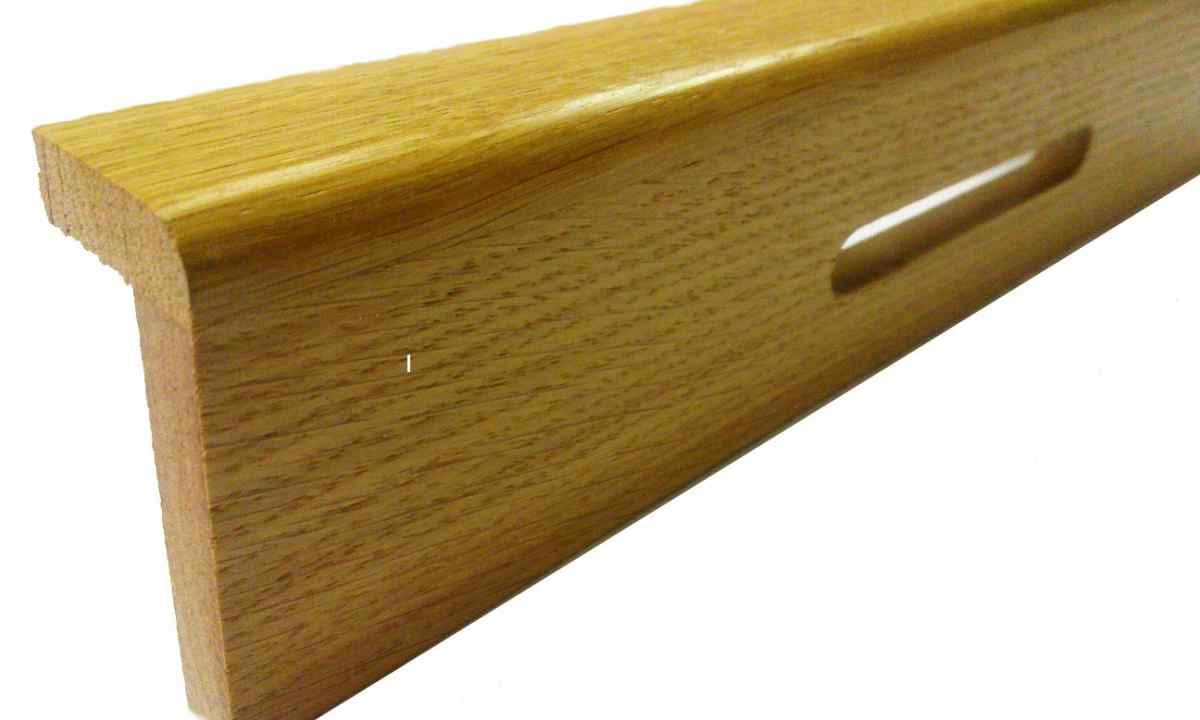Installation of plinths – one of the last stages in carrying out repair. This element of interior is designed to hide slots between floor and wall and also to give to the room completeness – at the correct selection the plinths become integral part of design of the room and are capable to emphasize all advantages of finishing.
Choice of color gamma
At material selection it is necessary to pay attention to 3 main parameters:
- type of floor covering;
- color gamma of walls and floor; - compliance to color and texture of doors. It is the best of all to make purchase of plinths after fine finish of the room that it was possible to assume in advance how this element of interior will look. Usually material is selected in one color with floor covering, however use of tones which can be slightly more dark is sometimes allowed or is lighter. In certain cases plinths choose under finishing of walls, especially if they are painted in uniform color. Sometimes this element of repair is chosen under color of doors, furniture or parts of interior.
You should not select plinths under multi-colored walls or bright wall-paper.
The correct size of plinths is selected depending on the room sizes. So, if the room has the big height or the area, you should not establish thin elements, and it is the best of all to choose wide baguette. Thin plinths will be suitable for small and low rooms. For standard rooms products 45-75 mm high are used. Material of plinth depends on type of floor covering and requirements to which there has to correspond the room. For coverings from board, parquet or high-quality laminate it is possible to use the products made of tree. For the laminated medium-priced floor, linoleum or carpet it is worth using MDF or plastic materials. Plinths from plastic or ceramics are suitable for ceramic tile.
Types of materials
Wooden plinths are made of solid wood, they are completely eco-friendly and easily are fixed to wall. They can be cut, dismantled or repaired independently. The lack of this material is that it has hypersensibility to humidity indoors because of which it can spoil and burst. You should not establish wooden products in bathrooms and toilets. The most expensive materials – linden and oak, the cheapest – pine. Upon purchase it is necessary to pay attention to massive class of wood.
It is desirable to order plinths from the same producer at which the order of floor covering has been made.
Plinths from interline interval easier are also made not of the massif, and of two parts – bases and coverings. The basis, as a rule, is made of fir-tree or pine, and the covering is made of wood of expensive breeds. When choosing pay attention to availability cable channel which will help to hide wires indoors. Products on the basis of MDF are made of the pressed wood fibers with addition of special substances. They are not afraid of moisture and dirt, and cost cheaper than some wooden plinths. Them it is possible fixes on any gluing structure. There are also plinths from plastic which are the cheapest. Despite this, they are not afraid of moisture and dirt, do not decay and are much more durable than wooden. Plastic products are simple in installation and are attached by self-tapping screws to wall.

